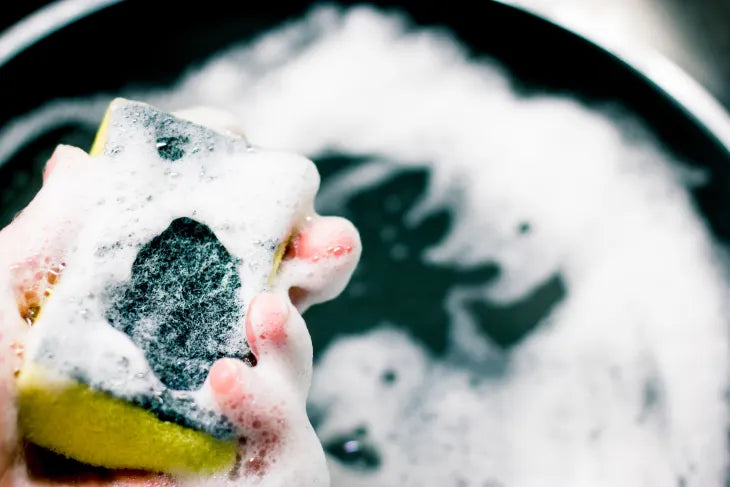For years, we’ve been told by home-keeping experts that microwaving or boiling our sponges is a great, budget-friendly alternative to buying a new one right away. But apparently, all that disinfecting does is make smelly sponges smellier — and more bacteria-filled.
A study from Scientific Reports, featured in the New York Times, has found that trying to disinfect your dirty sponge will only kill some of the bacteria on it, leaving the strongest, smelliest and potentially most pathogenic strains behind. Disinfecting it, it turns out, does not necessarily work.
The peer-reviewed epidemiology study on the (ever more trendy topic of the) microbiome was designed to stress and visualize the role of kitchen sponges as microbiological hot spots in the “built environment” of our homes and workplaces, where (at least in industrialized nations) we spend up to 90 percent of our lifetimes.
And according to the results, our kitchens — due largely to our used kitchen sponges — harbor more bacteria than our bathrooms. Researchers found that popular sponge-cleaning methods can only reduce general bacteria up to 60 percent, while making the remaining bacteria stronger and more densely packed on our sponges.By looking at the DNA and RNA in samples from 14 used sponges that may be as dirty as the one sitting in your sink right now, Markus Egert, a microbiologist at the University of Furtwangen in Germany, and his team identified 362 different species of bacteria living within them. And the scientists were surprised to find how densely the microbes occupied such close quarters: About 82 billion bacteria were living in just a cubic inch of space.
“That’s the same density of bacteria you can find in human stool samples,” Dr. Egert told the New York Times. “There are probably no other places on earth with such high bacterial densities.”
Read the full Scientific Reports study here, or the fascinating science behind why your sponges smell and why you should stop trying to disinfect them at home immediately — in layman’s terms—on NYTimes.com.
So how often should you replace your sponge? About once a week. Just skip the advice about disinfecting and go for broke with a brand new pack of scrubbers. One more area it’s now OK —actually, highly recommended — to #treatyourself.

